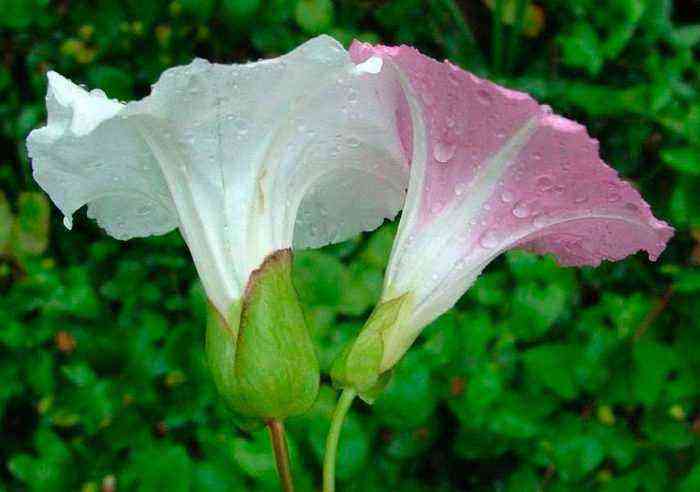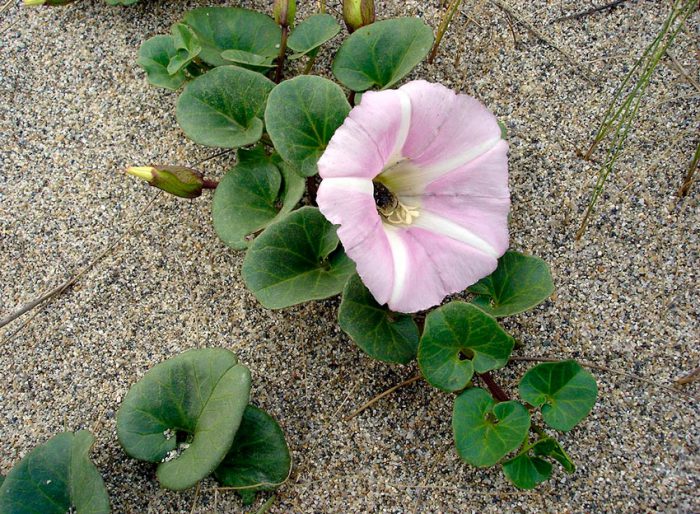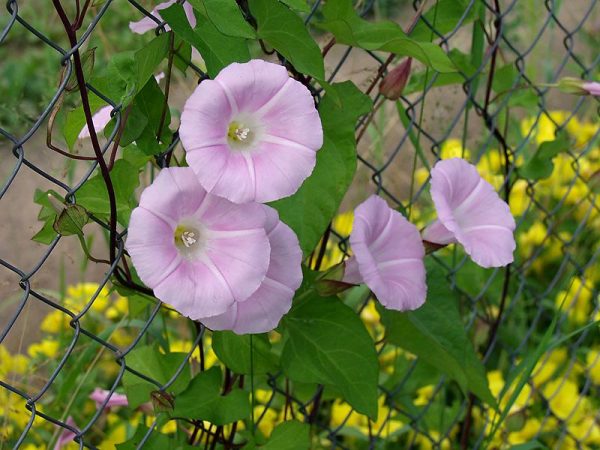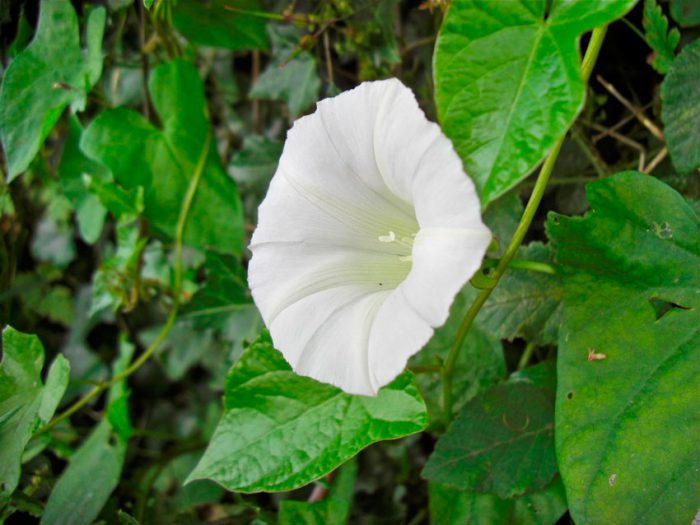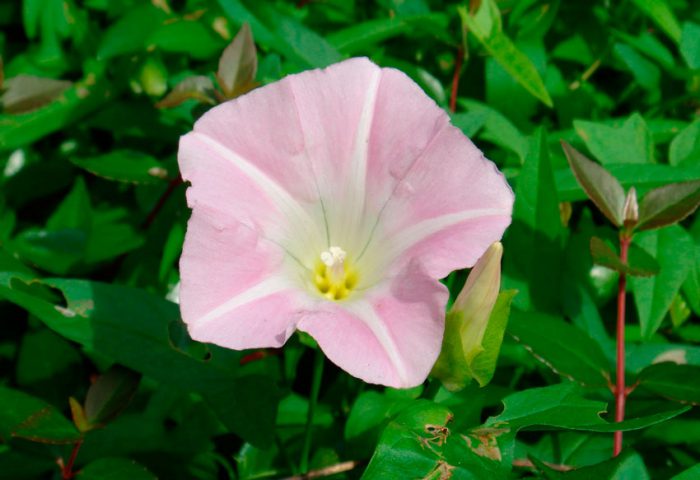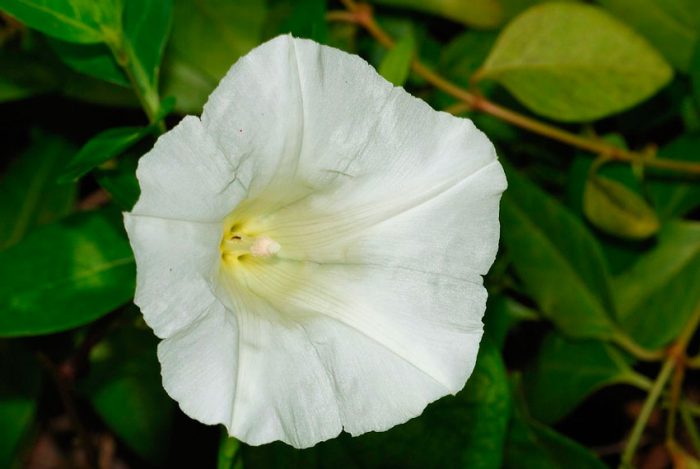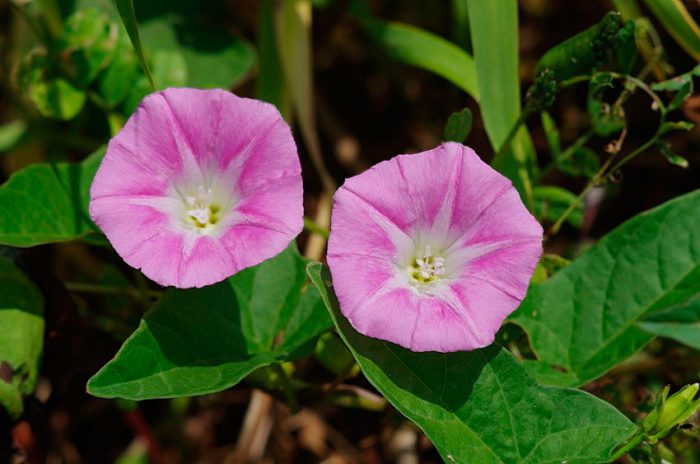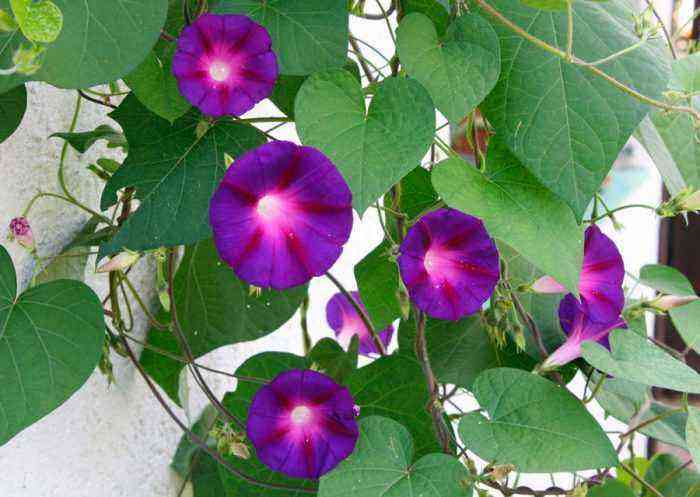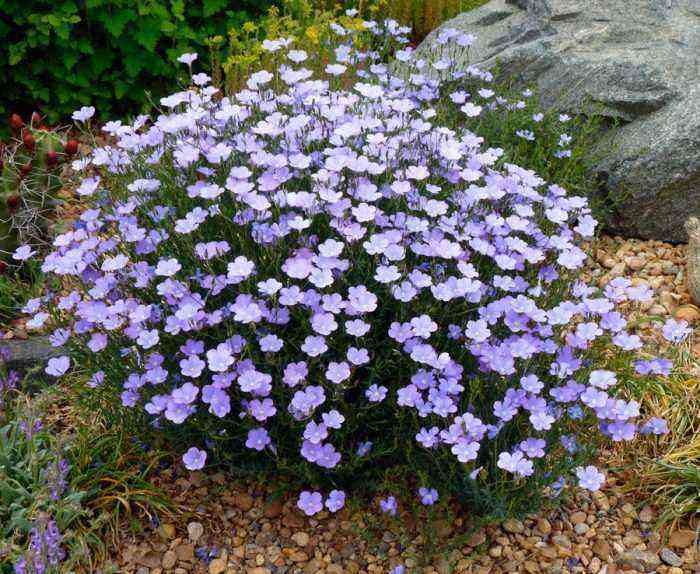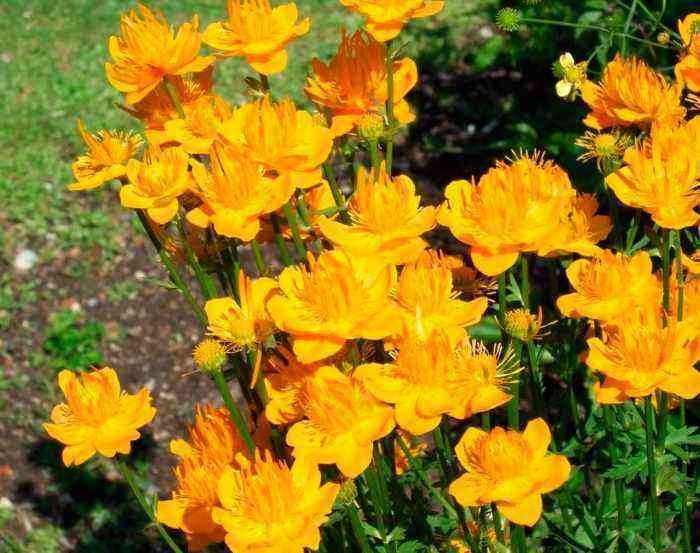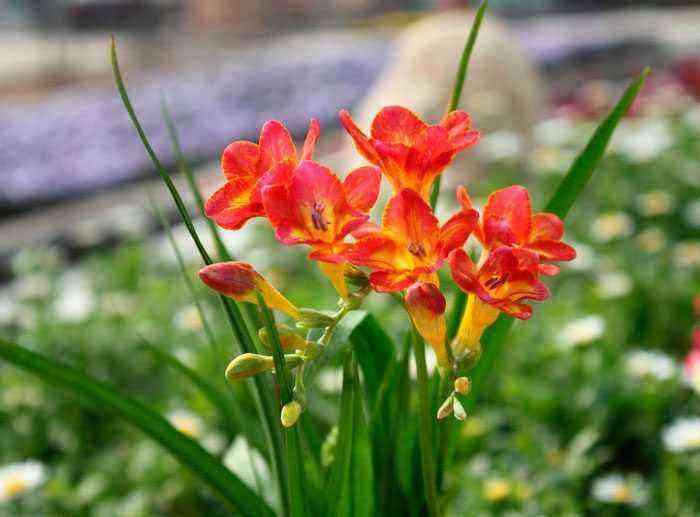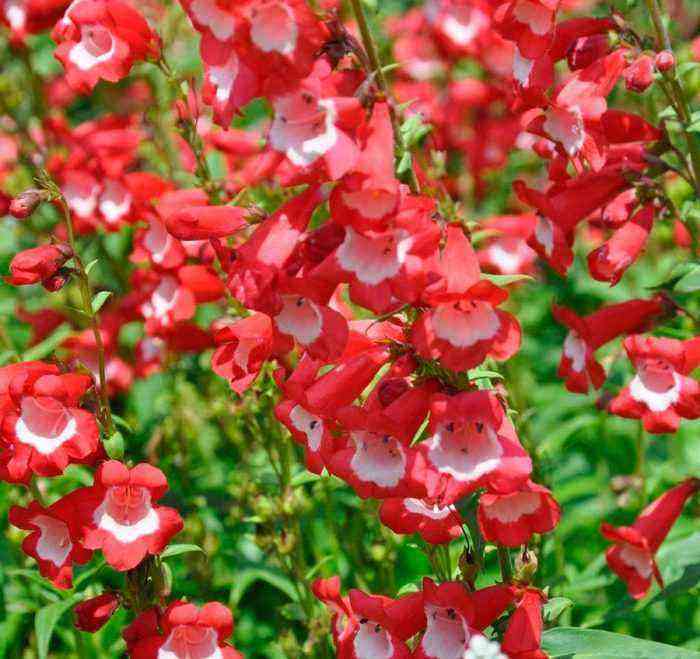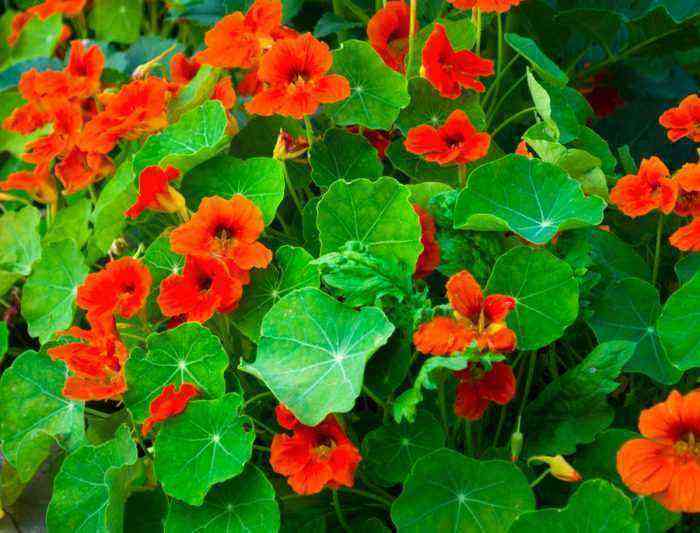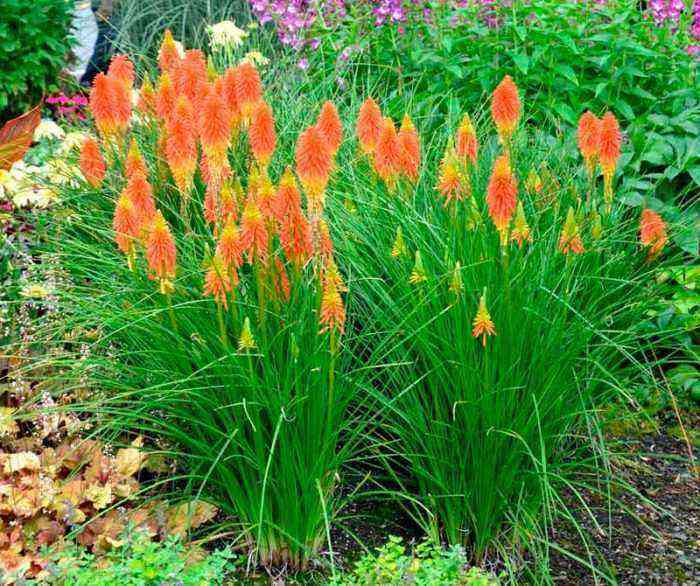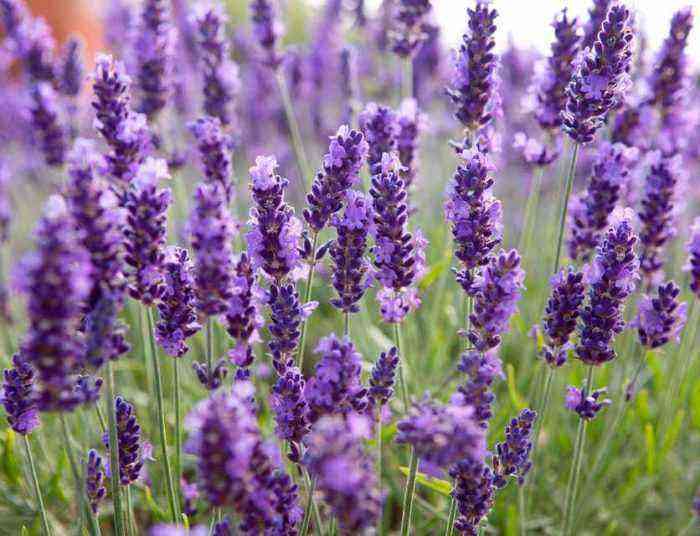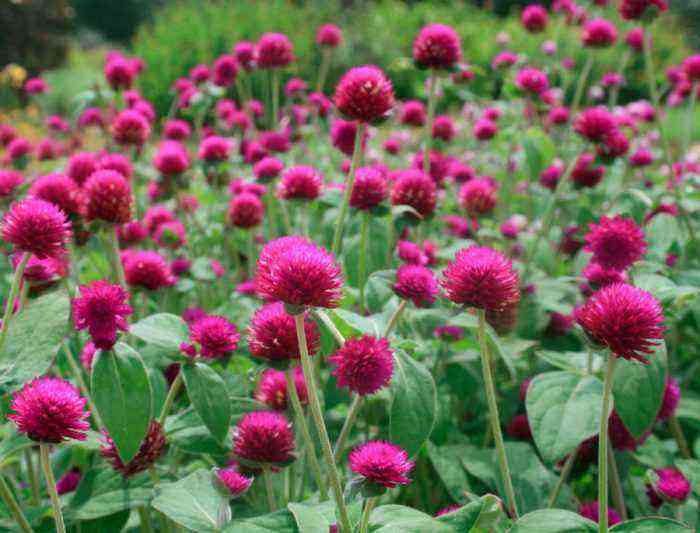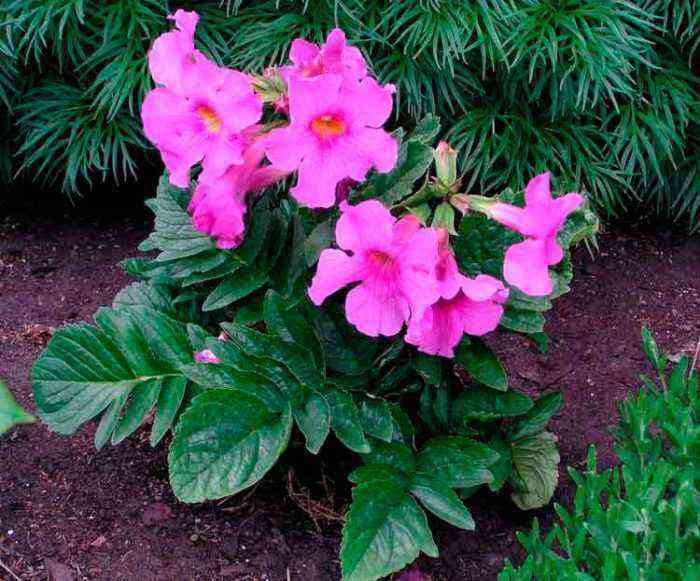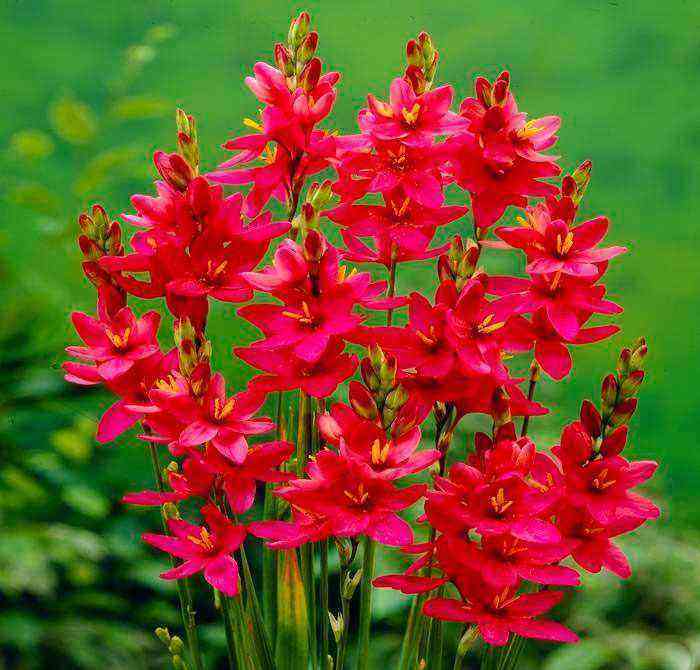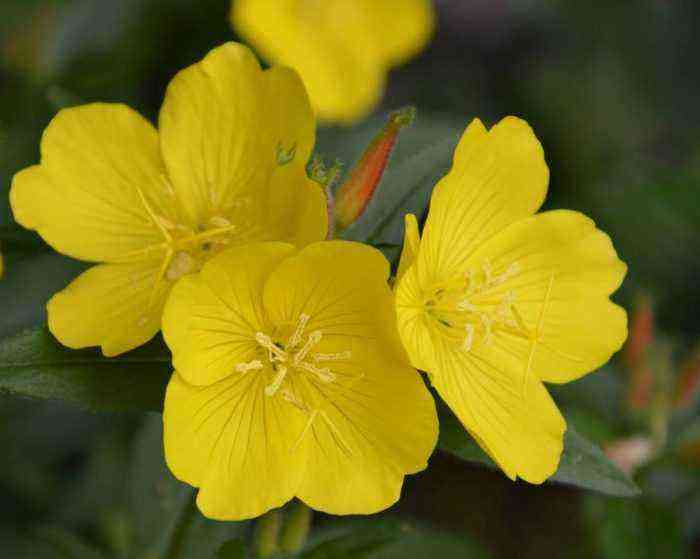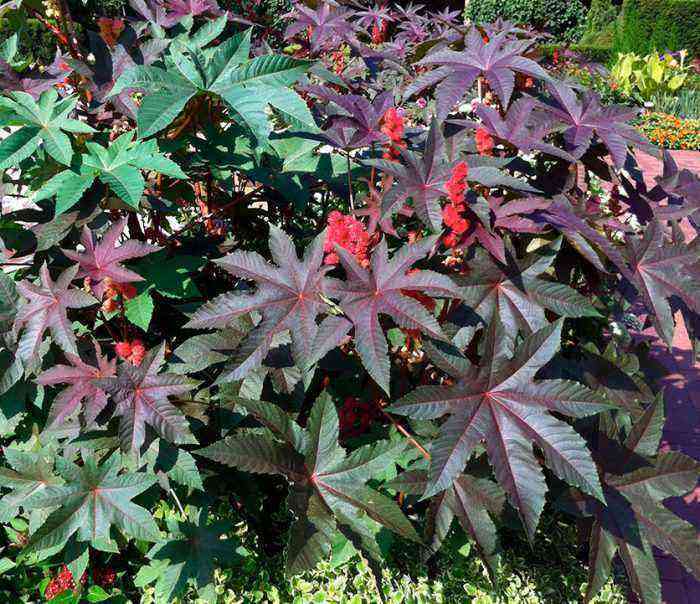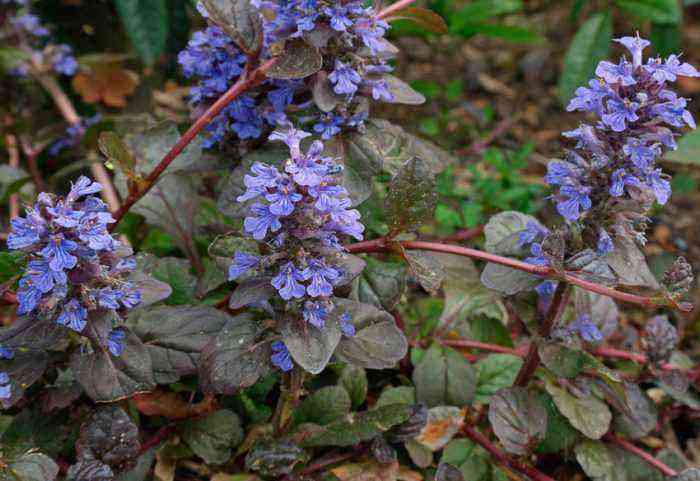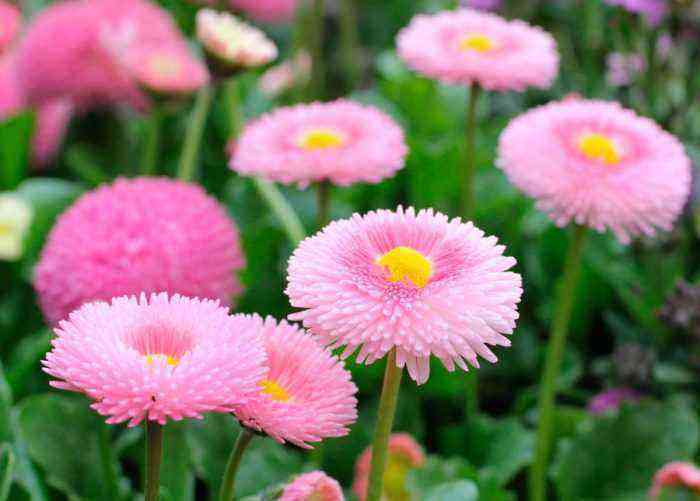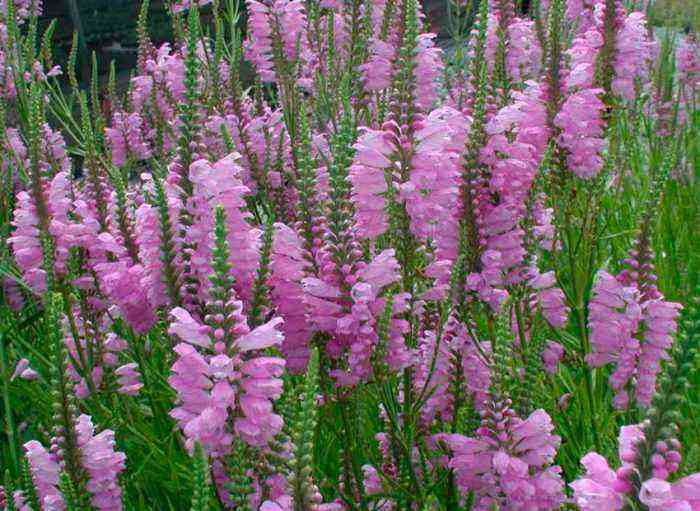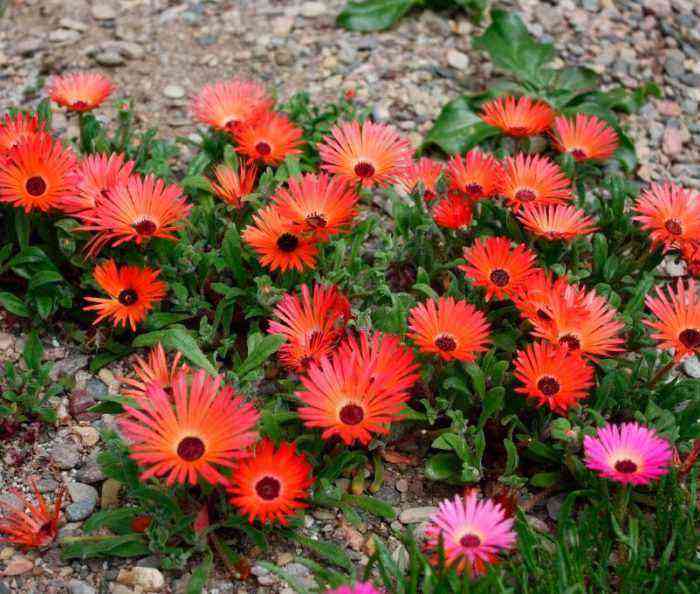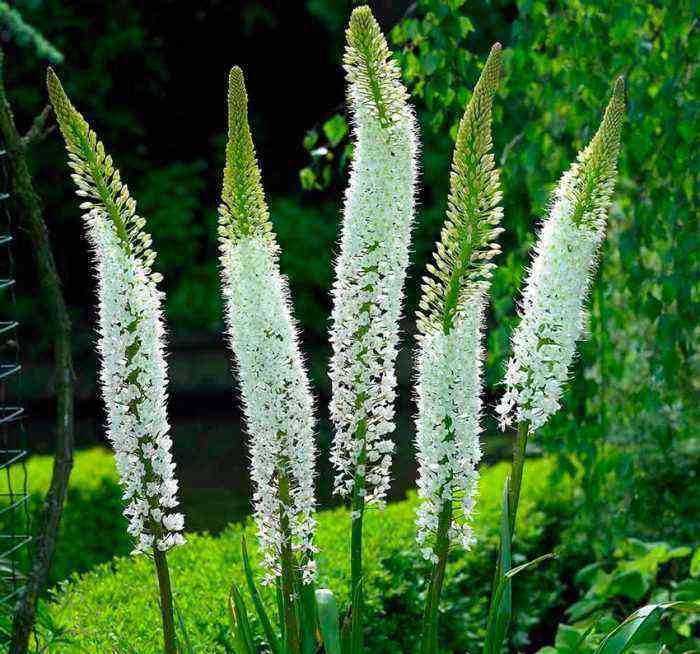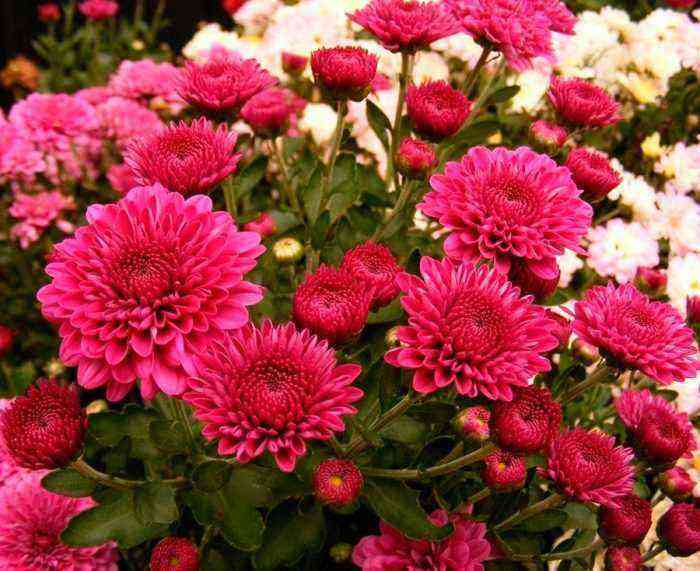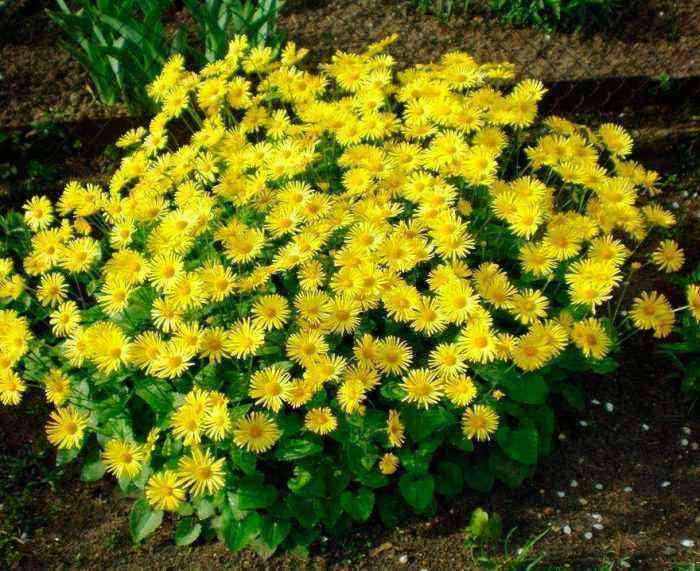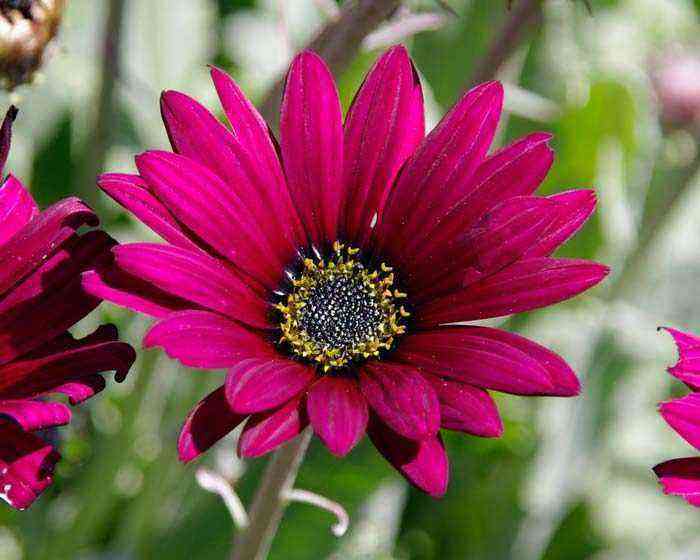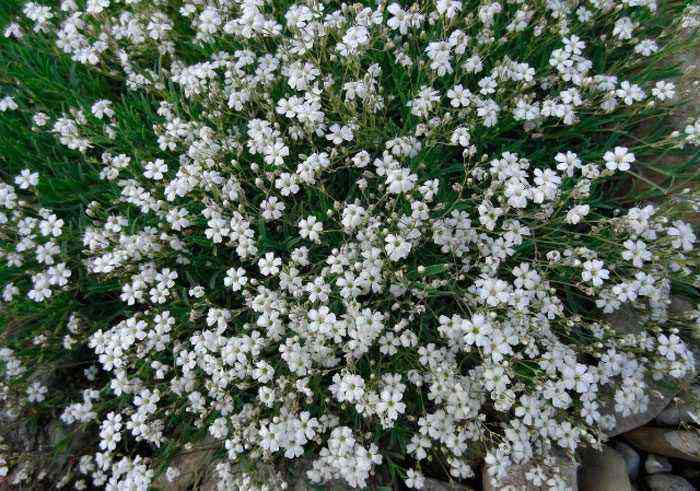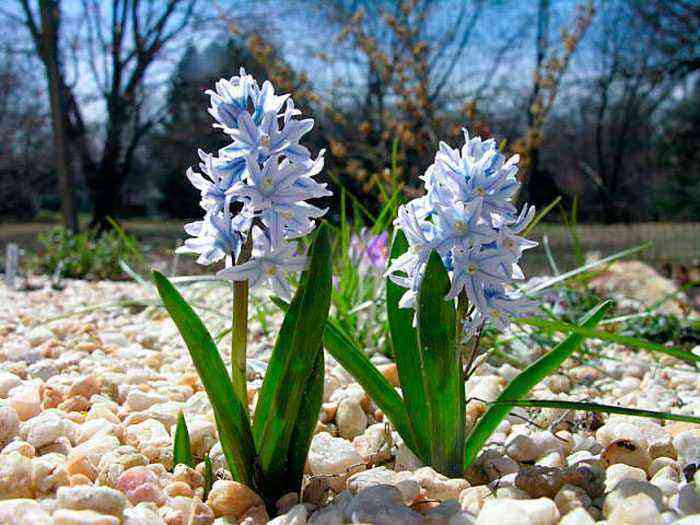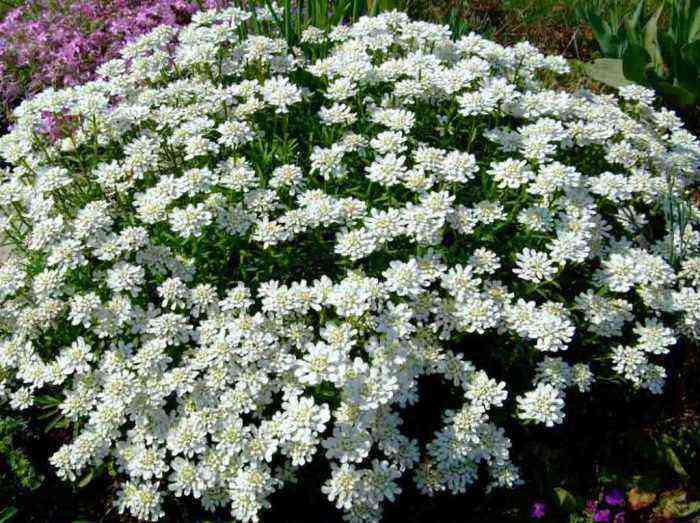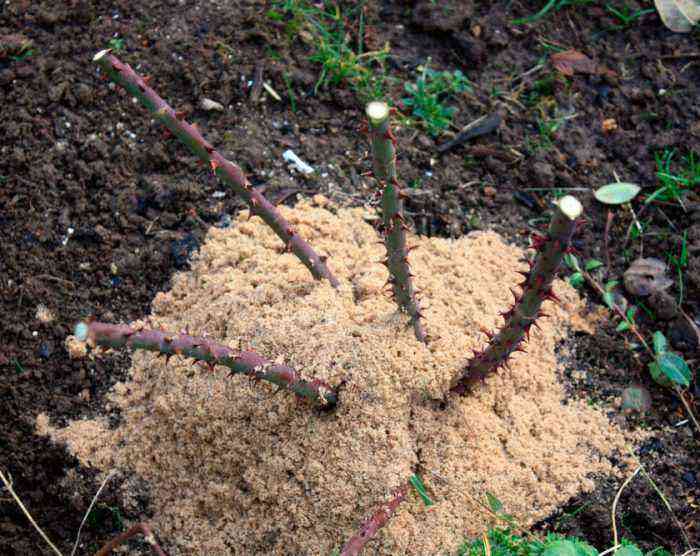The plant Calystegia, which is also called new, is a representative of the bindweed family. This genus is represented by herbaceous vines. The Latin name for such a plant is derived from two Greek words that translate as “calyx” and “cover”. So calistegia was named because of the large bracts. Popularly, this flower is called birch and bindweed, while its double varieties are called the French rose. The homeland of such a plant is East Asia (northern China and Japan). In natural conditions, there are about 25 species of povyev, most of them grow in regions with a temperate climate of both the Southern and Northern Hemispheres.
Features of calistegy
Calistegia is a herbaceous perennial plant with a developed root system that can cover a relatively large area. So, in spring, new sprouts of calistegia can appear in the most unexpected place. The fact is that they can grow from the old curtain at a distance of up to 150 cm. However, the spread of such a plant can be limited, for this a special fence is set up.
The length of the vines, which are distinguished by their flexibility, can reach up to 4 m. The leaf plates can be reniform, triangular or ovoid, they have a heart-shaped base and a wavy edge. These alternate long-petiolate leaves are placed along the entire stem. Most often they have a rich green color, and on their surface there is a relief pattern of veins. Axillary single flowers can be double and simple, they are painted white or pink, and reach 2-9 centimeters in diameter. They are placed in the same way as the leaves along the entire shoot. The fruit is a four-fold box with seeds inside.
As a rule, such a plant is used to decorate gazebos, partitions, arches, as well as to decorate walls.
Planting calistegia in open ground
What time to plant
As a rule, calistegia is propagated by dividing the rhizome, and this procedure is carried out in the spring. The rhizome of the mother bush must be dug up in March, all the earth must be removed from it and divided into parts. The size of the divisions should be from 5 to 7 centimeters, they must be planted horizontally in peat pots or a wide enough box filled with soil, while they are buried no more than 3-5 centimeters. However, you should first sprinkle the cuts with crushed charcoal. The planted cuttings must be watered. After some time, seedlings will appear. When the height of the plants reaches 5 centimeters, it will be necessary to pinch them, which will increase the splendor of the bushes and make their growth slower. Seedlings must be hardened before transplanting into open soil, and they do this in mid-May.
Features of landing
In the same place, such a flower can be grown for 10–20 years, in this regard, it is necessary to choose a site for planting quite carefully. If you want calistegia to grow well, and also bloom for a long time and abundantly, then plant it on an area that is illuminated by the sun in the morning, and is in partial shade from lunchtime. If you plant this flower in the shade, then it will bloom later than the due date, and there will not be many flowers. The soil should be loose and fertile, while it is better if it is peaty, loamy or deciduous. It should also be taken into account that the groundwater must lie deep enough at the site. And this flower also reacts negatively to stagnant melt water in spring.
You need to prepare a site for planting in the autumn. To do this, you need to dig up the soil to the depth of a bayonet, while for every 1 square meter you should add: 5–20 kilograms of humus, 1 tbsp. dolomite flour, 2 large spoons of complete mineral fertilizer and 2 tbsp. wood ash.
Hardened seedlings should be transplanted into open soil, like ordinary garden plants, with a distance of 5-30 centimeters between the bushes. In order to limit the spread of kalistegiya, it is necessary to “fence” the site by digging in pieces of plastic, slate or mesh tape half a meter wide to a depth of 0,4 m. This “limiter” should surround the plant on all sides. Supports for the flower are recommended to be placed immediately after planting.
Caring for calistegia in the garden
Kalistegiya is distinguished by its unpretentiousness, frost resistance and drought resistance. Caring for it is extremely simple, all that needs to be done is to moderately water the plant and loosen the soil superficially with a pitchfork to a depth of no more than 20-30 mm. During the rainy season, the flower can do without watering, but in dry season it needs them.
Such a fast-growing plant needs systematic feeding, for this they use a complex mineral fertilizer (per 1 square meter 1 tbsp. L. Substance).
Throughout the growing season, Kalistegia needs regular pruning and cutting off flowers that have begun to fade.
Diseases and pests
The grown new can be infected with various diseases, and pests sometimes settle on it. Regular stagnation of water in the soil can cause the development of one of the rot or powdery mildew. The affected specimen must be sprayed with a fungicide solution (for example, Fitosporin-M), and it must also be left without watering for a while. Slugs love the juicy leaves and flowers of the plant. To get rid of such pests, it is recommended to spray the vines and the surface of the soil near them with Thunderstorm. If there is a long dry and sultry weather, then spider mites can settle on a new one. They get rid of them with acaricides, for example, Aktara or Aktellik.
After flowering
All types of calistegia are highly winter-hardy, except for fluffy calistegia. However, if forecasters predict a frosty winter with little snow, then the area with plants will need to be covered with peat, dried foliage or sphagnum. Do not forget to pre-cut any dried lashes.
Types and varieties of calistegia with photos and names
A relatively small number of calistegia species are grown in the culture. The most popular ones will be described below.
Fluffy Calystegia (Calystegia pubescens)
This species comes from the territory of China, its stems reach 4 meters in length. The shoots are covered with slightly elongated leathery leaf plates of a rich green color, as well as double flowers, the diameter of which reaches 4-9 centimeters. Bell-shaped flowers have white-pink petals with a dark base. Planting and caring for this terry plant is exactly the same as for a simple one. The most popular variety is the flora of captivity: the shape of the leaf plates is arrow-shaped, and on the surface there is a gentle pubescence, pink double flowers are outwardly similar to pompoms.
Calystegia pellita
The homeland of this species is the Far East and Altai. In nature, he prefers to grow on rocky slopes, dry meadows, and also in bushes, like an ordinary weed. This densely haired herbaceous perennial plant has a long cord-shaped rhizome. The shoots of such a flower can reach 0,8 meters in length. Oblong pointed leaf plates have a broad-lanceolate shape. The color of simple flowers is pink. This species has been cultivated since 1884.
Intake calystegia (Calystegia sepium)
The branches of this perennial plant are about 300 centimeters long. Triangular-ovate or triangular leaf plates have a pointed apex. Simple single flowers can be painted in pale pink or white. This species is the very weed that simply cannot be completely “uprooted” from your garden or garden. It can also grow incredibly quickly.
Japanese fluff (Calystegia japonica), or new ivy (Calystegia hederifolia)
This type is terry. The length of its shoots varies from 1,5 to 2,5 meters. Small leaf plates are alternately arranged. The diameter of the double flowers is about 9 centimeters, and their color is pale pink.
Kalistegia Multiplex is a hybrid hop calistegia variety that is quite popular among gardeners. The length of the shoots of this plant is about 350 centimeters. Its double flowers reach 10 centimeters in diameter, they have a pink-pearl color that shimmers in sunlight. This variety is highly decorative, and it is able to compete even with excellent clematis.
